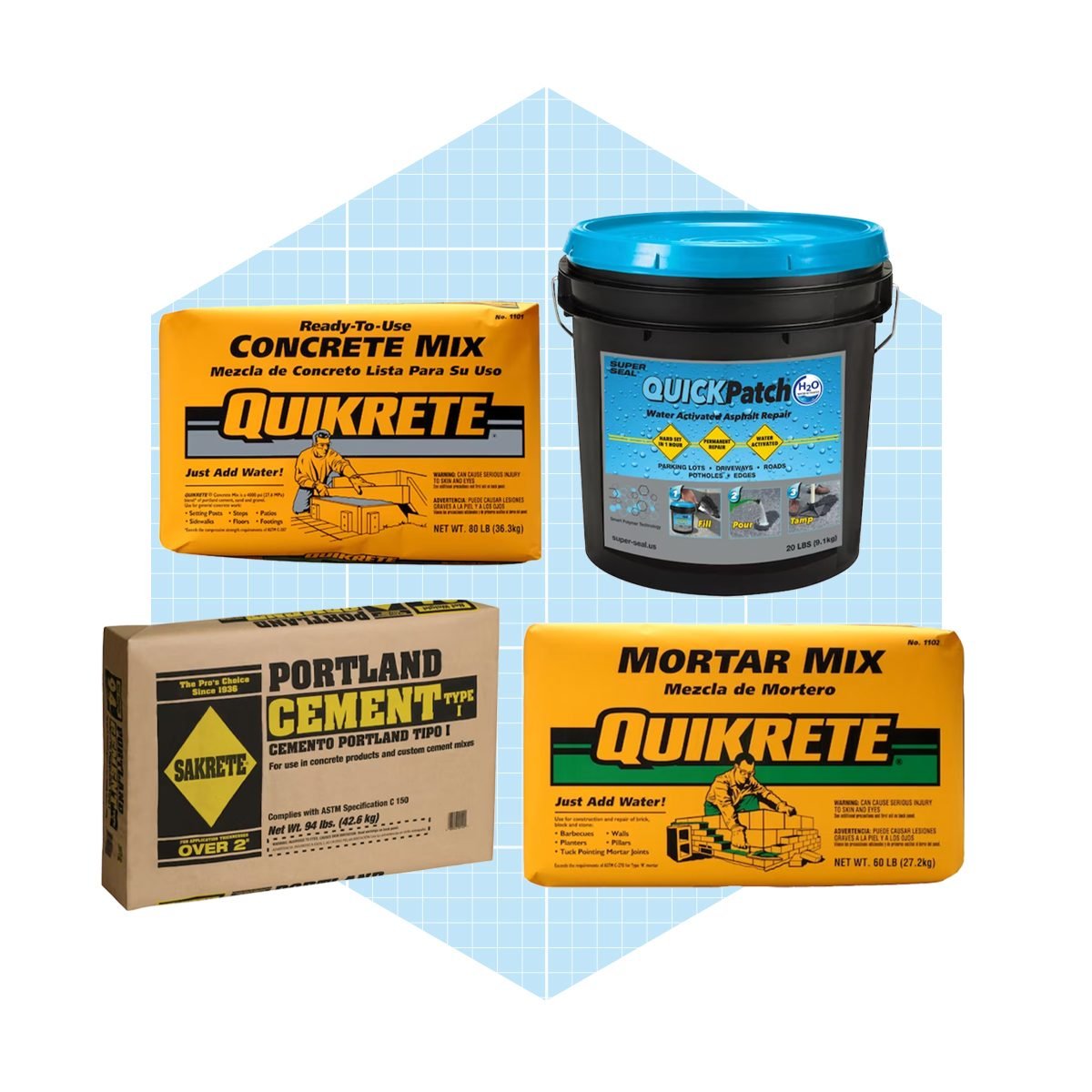If the difference between cement vs. concrete escapes you, you could end up making a big mistake when you go to the building supply store.
Both products come in bags, and there’s cement in both of them. But if you’re pouring a pad or building a foundation, pure cement isn’t what you’re looking for. Moreover, neither product is suitable for laying bricks or setting tiles; you need mortar for those. And if you’re surfacing a driveway, you need asphalt, which you might not even find in that store.
In everyday language, it’s easy to confuse cement with concrete, and people do it all the time.
You’ll hear homeowners talking about their cement patio or the cement foundation on their house when, if either were actually made from cement, it would have disintegrated years ago. I grew up near a large bridge, and we used to use the “cement” pillars for batting practice. Needless to say, those pillars were made from concrete, not cement.
Cement is an ingredient in concrete and mortar, but not asphalt, which is something altogether different. Asphalt is too soft and flexible to support a structure. But because it’s flexible and resists cracking — and costs less than concrete — many people prefer it for roads and driveways.
Here’s the lowdown on these four building materials to help you understand the differences and make the right choice.

What Is Cement?
In broad terms, cement is a type of glue or adhesive. But people talking about building products usually mean a specific type: Portland cement.
This isn’t a brand name, however. It’s a generic term coined in the early 1800s because the product resembled a type of stone found on the Isle of Portland off the British coast. Pure Portland cement is a powder that turns rock-hard when you mix it with water.
Manufacturers produce Portland cement from mined materials like limestone, shale, iron ore and clay. They mix them together and feed them into a kiln which heats them to between 2,700 and 3,000 degrees. The heat drives out water and carbon dioxide.
The raw materials then reconfigure into new chemical compounds that emerge as hard pellets called clinker. Manufacturers grind the clinker to a fine powder, often adding gypsum and/or limestone. When the powder mixes with water, the chemicals hydrate and recombine to form a hard mass.
You’ll find Type I cement at the store, but others are available for specific conditions. Cement is usually gray. But by minimizing the amount of iron and manganese in the mixture, manufacturers can produce Portland cement with a whitish hue.
What Is Concrete?
You have to add something to cement to make it strong enough for building. Add sand and crushed rock, and you’ve got concrete. Ratios vary, but the most common is four parts crushed rock, two parts sand and one part cement. If you need a stronger mixture, add more crushed rock. Adding more sand makes the mixture more workable.
Premixed concrete comes in 50-, 60- and 80-pound bags, usually costing less than $5 per bag. For larger projects, builders make their own concrete or have it delivered by trucks with cement mixers.
The amount of water added to dry concrete mix determines its strength and workability. Generally speaking, the less water added, the stronger the concrete will be when it sets. However, the mixture flows less easily and sets faster. The optimal proportion of water is about three quarts for every 80 pounds. Any more water than that isn’t recommended because it weakens the mixture.
What Is Mortar?
Take out the crushed rock from concrete mix, leaving only sand and cement, and you have mortar. Masons use mortar to hold bricks and concrete blocks together. Tilers employ a type of mortar called thin set for floor and wall tiles.
Mortar isn’t as strong as concrete. But because it contains no large aggregate, it’s a better adhesive, and more decorative. Bricklayers often include lime in the mixture for added durability, and tile setters include a latex additive to improve flexibility.
Like concrete, mortar must be mixed in specific proportions to optimize strength and workability. For bricklaying, it’s one part cement to three parts sand. For a stronger mixture, go with six parts sand. When you add lime, it’s usually in a one-to-one ratio with cement.
What Is Asphalt?
Asphalt is an outlier on this list. It’s petroleum-based, not water-based, and has no structural value. It’s used to cover flat surfaces like roads and flat roofs to make them waterproof. Asphalt consists of small aggregate and sand mixed into an oil-based binder.
Today, the aggregate for highway projects often includes ground-up tires, foundry sand, old glass and other recycled materials — even old asphalt. The aggregate in the asphalt you buy at building supply stores, for filling potholes and other pavement repair projects, is usually crushed quartz and other hard minerals.
Asphalt always comes pre-mixed and often must be heated prior to application to improve its flow rate. For this and other reasons, pros with specialty equipment do the big asphalt jobs. Homeowners can usually do small jobs like filling potholes or resurfacing driveways themselves.
Because heating asphalt is impractical without the proper equipment, DIYers usually use cold patch, which doesn’t need to be heated.
Did you miss our previous article...
https://rsssuperfeeds.com/life-hacks/sun-joe-chipper-make-light-work-of-yard-debris






